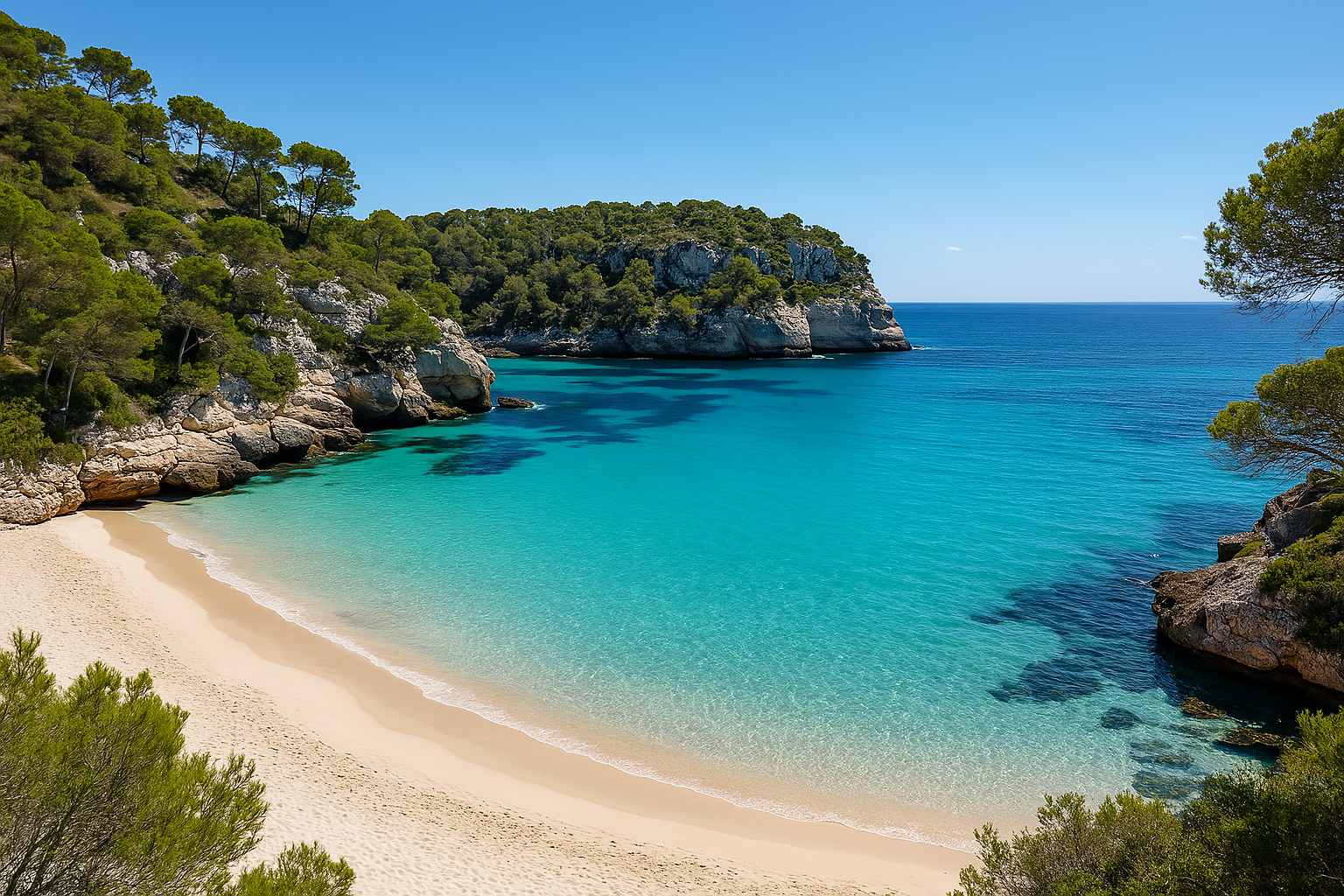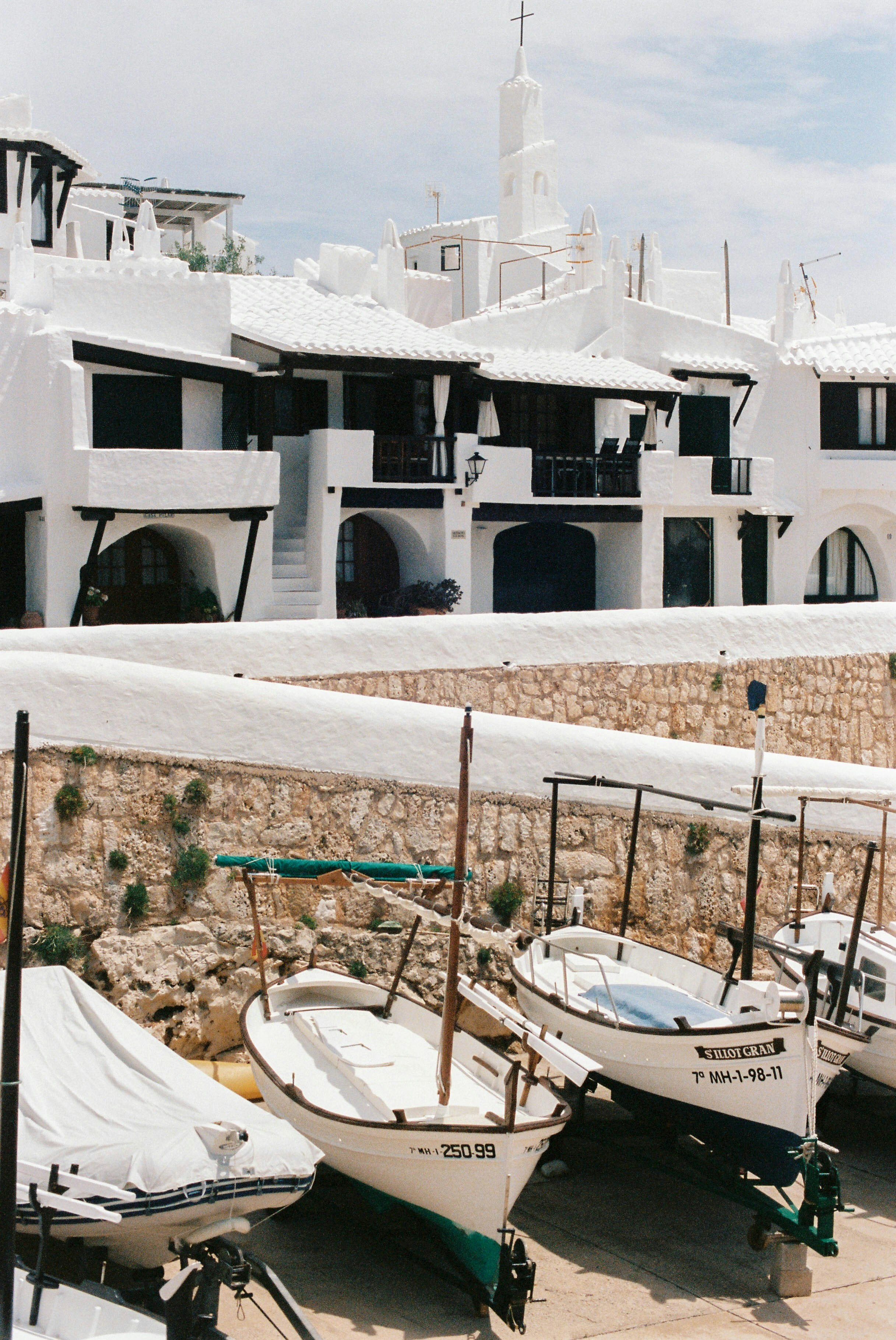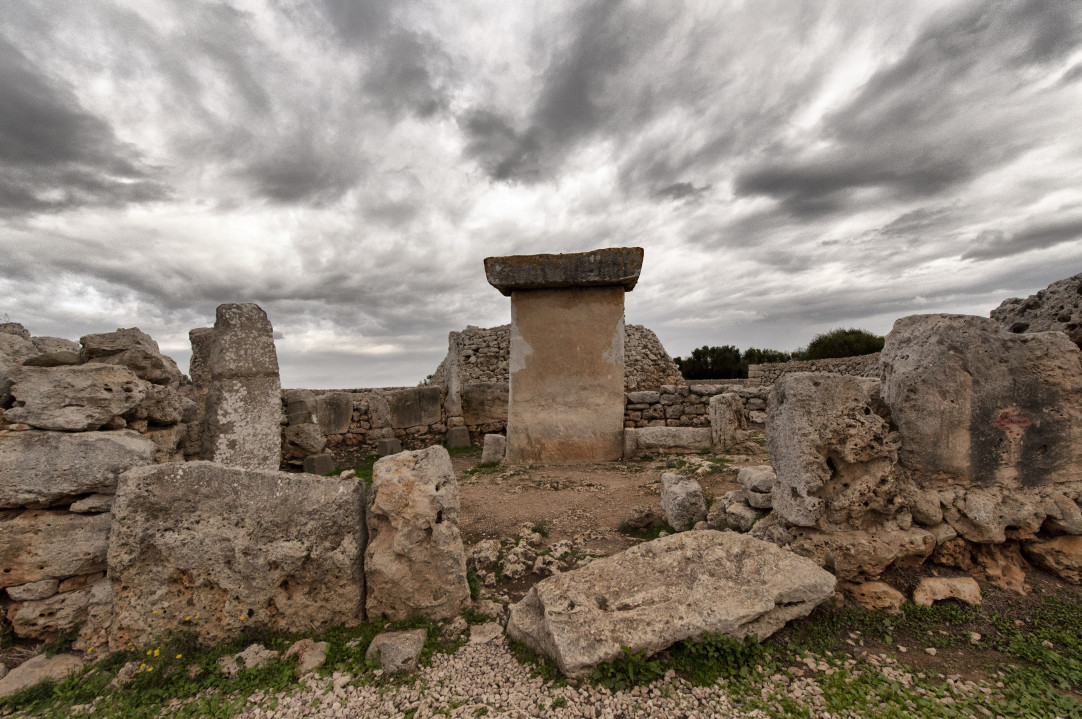- Publication date
What to See and Do in Menorca: A Complete Guide to Discover the Island
- Authors
- Name

The Best Beaches in Menorca
The beaches of Menorca are undoubtedly one of its main attractions. With crystal-clear waters, white sand, and pristine natural surroundings, many seem plucked from the Caribbean. Below, we show you some of the most spectacular and highly rated by travelers.
- Cala Macarella and Cala Macarelleta
These two neighboring coves form one of Menorca’s most famous postcards. Located on the south coast, a short distance from Cala Galdana, Cala Macarella is spacious and offers facilities, while Macarelleta is smaller, wilder, and has a slightly more challenging access. Both feature turquoise waters surrounded by pine trees and cliffs.
Local tip: In high season, it’s best to arrive early (or by public transport) because parking fills up quickly. The path connecting the two coves is perfect for a scenic walk.
- Cala Mitjana and Cala Mitjaneta
Also in the south, Cala Mitjana is one of the most accessible and comfortable coves to visit. Its white sand and wide expanse make it ideal for families. Next to it hides Cala Mitjaneta, smaller and more intimate, highly sought after by those seeking absolute tranquility.
Suggestion: In the low season, you can enjoy these coves almost to yourself, making the visit a unique experience.
- Cala Turqueta
Considered one of the prettiest beaches in Menorca, its name comes from the stunning turquoise color of its water. It’s surrounded by nature, with no buildings nearby, enhancing its charm. Perfect for snorkeling and swimming in an untouched setting.
Tip: There’s a small parking area that fills up quickly. You can also reach it on foot from other coves via the Camí de Cavalls.
- Cala Pregonda
Located on the north coast, it offers a radically different landscape: golden-reddish sand, deeper waters, and volcanic rock formations. Although it requires about a 30-minute walk from the parking area, its wild and isolated character is impressive.
Why it’s worth it: It’s unique and tends to be less crowded. Ideal for those seeking a distinct and tranquil cove.
Charming Villages to Visit
Menorca captivates not only with its natural landscapes but also with its villages full of history, tradition, and local life. Touring them is the best way to know the island’s essence.
- Ciutadella
The former capital, Ciutadella is one of the most charming and complete destinations for visitors. Its historic center is full of narrow cobbled streets, picturesque squares, and stately architecture. Don’t miss the Cathedral of Santa Maria, Plaça des Born, and the harbor, which comes alive at sunset.
Recommendation: Visit the Mercat des Peix to taste local products and tapas in an authentic setting. If you love history, the Diocesan Museum offers an interesting glimpse into Menorca’s past.
- Mahón (Maó)
Menorca’s current capital is modern but retains a strong British colonial character. Its natural harbor is one of the largest in Europe and a perfect spot for a stroll, dinner, or a drink with a view. The historic center features palaces, churches, and the lively Mercat del Claustre del Carme.
Fun fact: The famous mayonnaise sauce was born here. You can also take boat tours of the harbor to learn about its history and fortifications.
- Binibeca Vell

Although not a historic village, Binibeca Vell is one of the island’s most picturesque spots. Designed to mimic an old fishing settlement, its white, labyrinthine streets make it ideal for photos, peaceful walks, and memorable sunsets.
Tip: If you visit in high season, try to go early in the morning to avoid the crowds.
Historical and Cultural Sites
Menorca is an open-air museum. Its archaeological sites, fortifications, and remains of various civilizations tell a millennia-old story. Here, you don’t just come to bask in the sun—you come to discover the island’s deep roots.
Talayotic Menorca: UNESCO World Heritage

In 2023, UNESCO declared Talayotic Menorca a World Heritage Site for its outstanding universal value. This unique prehistoric culture in the western Mediterranean left a legacy of megalithic monuments scattered across the island.
The Talayotic culture flourished between 1600 BCE and 123 BCE and is renowned for its cyclopean constructions—talayots, taulas, and navetas—structures unique in the world. Today, many of these sites are excellently preserved and open for visits.
- Naveta des Tudons
Arguably the most iconic archaeological site in Menorca. This inverted-boat-shaped funerary structure served as a collective tomb during the Bronze Age. Located a few kilometers from Ciutadella, it has been meticulously restored for visitors.
- Talayotic Settlement of Trepucó
On the outskirts of Mahón, this settlement stands out for its enormous taula and talayot remains. Walking among its ruins is like traveling back in time and offers an excellent introduction to Talayotic culture.
- Torre d’en Galmés
The largest Talayotic site in Menorca and one of the most impressive. Situated in the south of the island between Alaior and Son Bou, it spans a vast area. Here you can see circular dwellings, an ancient water collection system, talayots, and a monumental taula.
Activities to Do in Menorca
Kayak Excursions
Exploring the coast by kayak is one of the most exciting ways to discover hidden coves, caves, and impressive rock formations. Guided outings are organized from Cala en Porter, Es Grau, and Fornells for all skill levels.
Hiking the Camí de Cavalls
This ancient 185 km path encircles the entire island and can be tackled in sections. On foot or by bike, it reveals pristine landscapes, secluded beaches, and spectacular viewpoints. It’s well marked and retains its historic essence.
Diving and Snorkeling
Menorca’s clear, clean waters make it perfect for diving and snorkeling. In the north, the marine reserve off s'Albufera des Grau offers a protected environment rich in biodiversity.
Horseback Riding
Menorca has a strong equestrian tradition. Horseback routes traverse forests, beaches, and rural tracks—an offbeat way to connect with nature and enjoy the island’s tranquility.
How Awaita Can Help You on Your Menorca Visit
When you’re exploring an island as culturally rich as Menorca, the difference between an ordinary trip and an unforgettable experience lies in context. That’s where Awaita comes in.
Awaita is more than an app: it’s an intelligent virtual assistant that brings every corner of Menorca to life. Designed for those who want to explore heritage freely—without relying on guides, schedules, or language barriers—Awaita is your perfect tool to discover the most authentic, cultural Menorca.
A Personalized, Accessible Experience for Everyone
Thanks to its technology, Awaita offers real-time information in multiple languages and adapts to different age groups, making it perfect for both international tourists and residents. Whether you’re standing before a taula or strolling through Ciutadella, Awaita explains what you’re seeing with precision and warmth, as if an expert guide were by your side.
Discover the Invisible to the Naked Eye
With Awaita, you won’t just know what you’re looking at—you’ll understand why it matters. It reveals local anecdotes, archaeological data, and cultural details hidden from plaques and traditional guides.
Freedom to Learn at Your Own Pace
No schedules, no preset routes. You decide when and how much you want to learn. Awaita is always available on your mobile, ready to answer your questions and enrich your visit according to your interests.
A Key Tool for Cultural Tourism
Menorca is a World Heritage Site thanks to its history, and Awaita connects you directly with that legacy. Whether you visit Naveta des Tudons, the Trepucó settlement, or any Talayotic site, Awaita puts all the information at your fingertips—clear, reliable, and immediate.
If you want to experience Menorca more deeply, respectfully, and enriching, Awaita is your best ally.
Frequently Asked Questions
What is the best time to visit Menorca?
Spring and early autumn (May–June and September–October) are ideal for visiting Menorca. The weather is pleasant, there are fewer tourists, and you can enjoy the beaches and trails in greater tranquility.
What to see in Menorca with children?
Menorca is a perfect family destination. Some recommendations: Cala Galdana, boat trips, easy kayak excursions, the Lloc de Menorca (zoo), and cultural visits with Awaita, which offers child-friendly explanations.
How many days do I need to see Menorca?
Ideally, 5 to 7 days are needed to enjoy beaches, villages, culture, and nature at a relaxed pace. With 3 days, you can see the essentials of the south and one or two archaeological sites.
Can you explore Menorca without a car?
Yes, although renting a car is more convenient. There are also public buses between main points of interest, bike routes, organized excursions, and taxis. Awaita can help you plan according to your mobility.
Which routes to take in Menorca?
The Camí de Cavalls is the star route, but there are also rural paths between villages, trails through natural areas like s’Albufera des Grau, and coastal walks perfect for short hikes.
What is Awaita and why use it?
Awaita is a virtual tourist assistant designed to help you discover the cultural and historical heritage of Menorca in an autonomous and personalized way. It provides real-time information in multiple languages and adapts to different user profiles. It’s the ideal tool to understand what you’re seeing while exploring Talayotic sites, monuments, or villages without the need for traditional guides. If you want a deeper, more enriching experience, Awaita is your best ally.